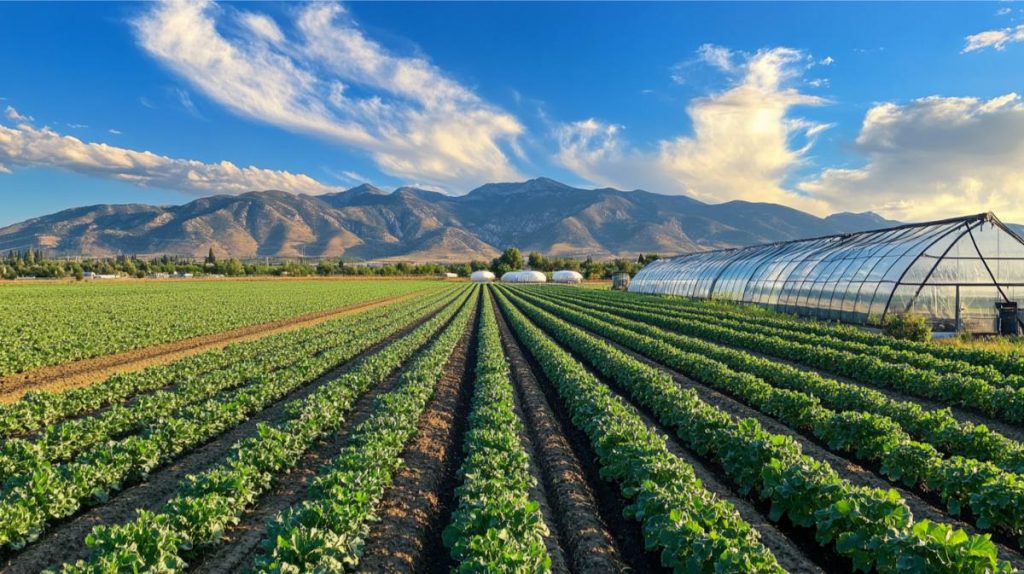Imagine a world where farming doesn’t harm animals. Sounds too good to be true, right? Well, thanks to advances in technology, this dream might become reality sooner than you think.
From vertical farming to lab-grown meat, innovative solutions are popping up left and right.
You might be wondering, “Can these high-tech methods really replace traditional farming?” The answer is a resounding yes – technology has the potential to revolutionize agriculture and significantly reduce animal cruelty.
Picture robots tending to crops and scientists growing perfect steaks in labs. It’s not science fiction anymore!
But it’s not just about fancy gadgets. These new farming techniques could also help tackle other big issues like food security and environmental sustainability.
So, buckle up as we explore how the future of farming might just save our furry and feathered friends while feeding the world.
Key Takeaways
- New technologies are transforming farming to be more animal-friendly and sustainable.
- Lab-grown meat and plant-based proteins offer cruelty-free alternatives to traditional animal agriculture.
- Smart farming techniques can improve crop yields and reduce environmental impact.
Technological Innovations in Agriculture
New farming tech is changing the game for animals. You’ll be amazed at how science and gadgets are making life better for our furry and feathered friends on the farm.
The Rise of Precision Agriculture
Ever wonder how farmers keep track of all those acres? Say hello to precision agriculture!
It’s like giving farmers superpowers. Drones zip across fields, snapping pics and gathering data faster than you can say “Old MacDonald.”
These high-tech flying friends help spot pesky weeds and pests before they become a big headache.
And get this – they can even tell when plants are thirsty!
Smart irrigation systems use this info to water only when needed, saving precious H2O.
But wait, there’s more! AI and machine learning crunch all this data to help farmers make smarter choices.
It’s like having a super-smart farm assistant in your pocket. The result? Happier crops, healthier soil, and a smaller environmental footprint.
Who knew farming could be so high-tech?
Biotech Solutions for Ethical Livestock Farming
Hold onto your hats, folks – the future of meat is here, and it’s growing in a lab!
Cultured meat is taking the world by storm. Imagine juicy burgers and tender chicken, all without harming a single animal. It’s not science fiction anymore!
Bioreactors and tissue engineering are the secret sauce behind this meaty marvel. Scientists start with a tiny sample from an animal (who gets to live happily ever after) and grow it into delicious, cruelty-free protein.
Exciting protein companies are racing to bring these products to your plate. The Good Food Institute is cheering them on, working to make cell-based meat tasty, affordable, and widely available.
Soon, you might be grilling up a lab-grown steak that’s kinder to animals and the planet.
The Role of AI in Farm Animal Welfare
AI isn’t just for smartphones anymore – it’s making life better for farm animals too!
Imagine a world where computers can tell when a chicken is feeling under the weather before even the farmer notices. That’s the power of AI on the farm!
Smart cameras with computer vision keep a watchful eye on livestock 24/7. They can spot if an animal is limping, not eating enough, or just acting odd.
This early warning system means faster treatment and happier, healthier animals.
For our feathered friends in factory farms, AI is a real game-changer.
It can monitor air quality, temperature, and even the chickens’ behavior. If things aren’t quite right, the system can automatically adjust conditions to keep the birds comfy.
It’s like having a super-attentive robo-farmer looking out for every animal!
Regenerative Practices and Sustainability

Farming can be kinder to the planet and animals. You’ll be amazed at how new methods can heal the land and reduce harm. Let’s dig into some cool ways farmers are making a positive change.
Revamping Soil Health and Ecosystems
Ever thought about soil as a living thing? Well, it is!
Regenerative agriculture is all about bringing life back to the dirt. You’ll love how it works:
- No-till farming: Keeps soil structure intact
- Cover crops: Protects soil and adds nutrients
- Crop rotation: Breaks pest cycles naturally
These practices help fight soil degradation. They also boost biodiversity, making farms buzz with life. Your food could come from a mini-ecosystem!
Reducing Environmental Footprints
Ready to shrink that carbon footprint? Regenerative farming is your new best friend. It’s like a superhero fighting climate change:
- Captures carbon in the soil
- Reduces need for chemical inputs
- Improves water retention
You’ll be thrilled to know this approach uses way less water. It’s a big deal in our changing climate. Sustainable practices are making waves in livestock farming too.
Farrowing systems are getting upgrades. New designs give piglets and moms more space and comfort. It’s a small change with a big impact on animal welfare.
Tech is joining the party. AI-powered systems help farmers use resources wisely. They can spot problems early and make smart choices.
Your future burger might thank a robot for its eco-friendly journey to your plate!
